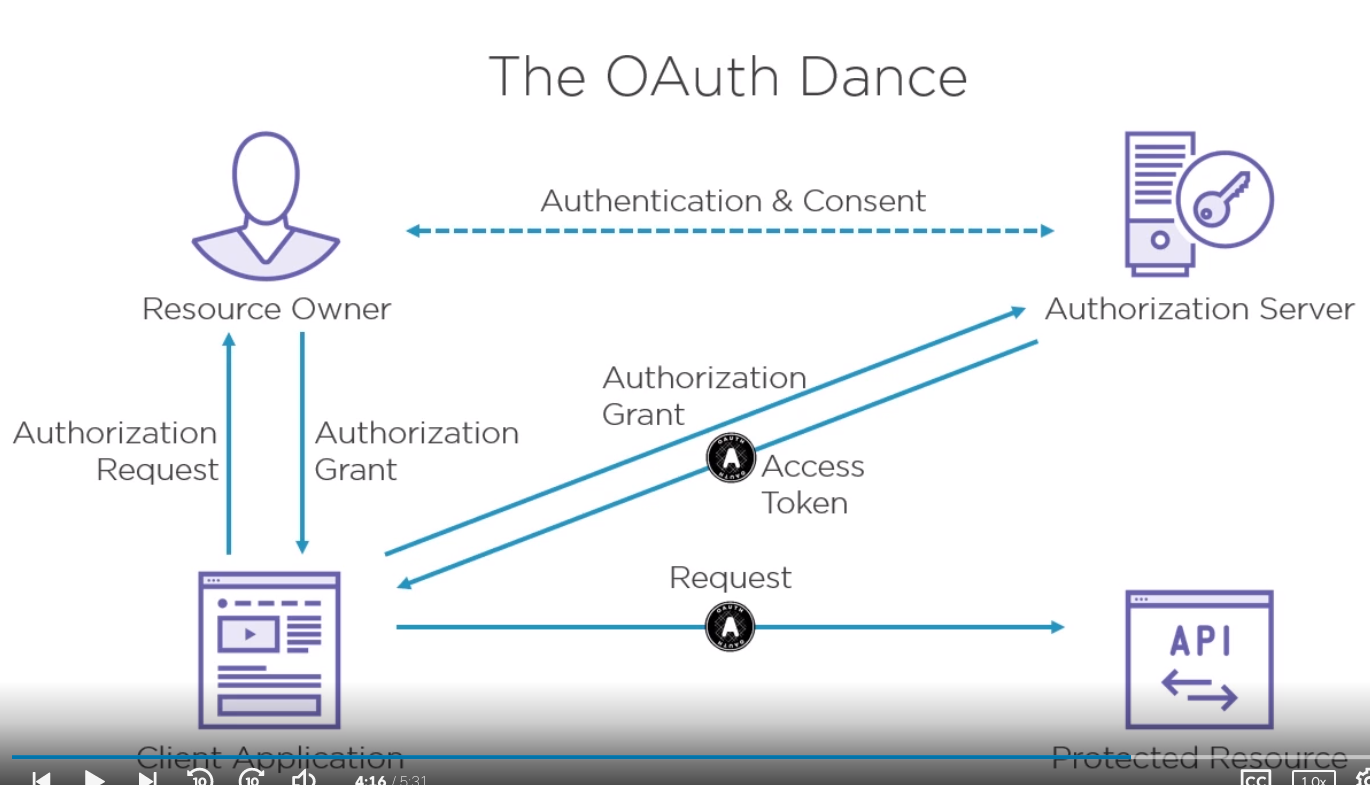OAuth 2.0
Introduction
History
Previously we used
- XML
- SOAP
- SAML or WS-*
Now we Use
- JSON
- HTTP APIs
- OAuth and OpenID Connect
Credential Sharing
Previously we used to use credential Sharing. E.g. Problems with this are
- We can impersonate the use
- Issues around revocation
- Exposed user credentials
Cookies
Next solution was cookies but CSRF and XSRF attacks were common.
API Key
Next API Key, this works well accept for where the app has no backend. E.g. Single Page App.
- API Keys have no standard
- Expiration management
OAuth 2.0
Features include
- Authorization framework
- Built for HTTP APIs
- Scoped access (User defined what can be used)
- Delegation Protocol
Players include
- Protected Resource (Our API)
- Client (requesting application)
- Resource Owner (the user)
- Authorization Server
